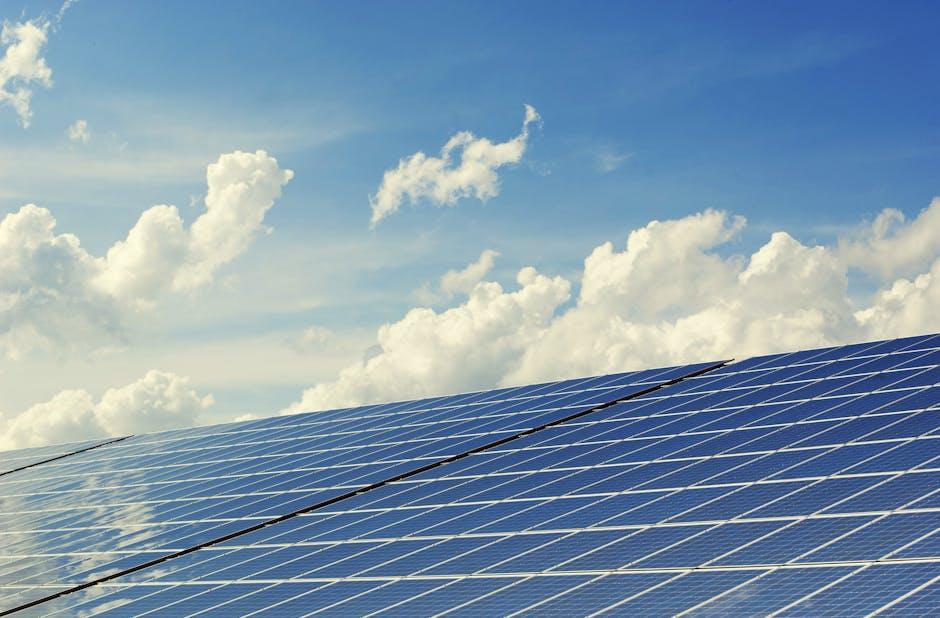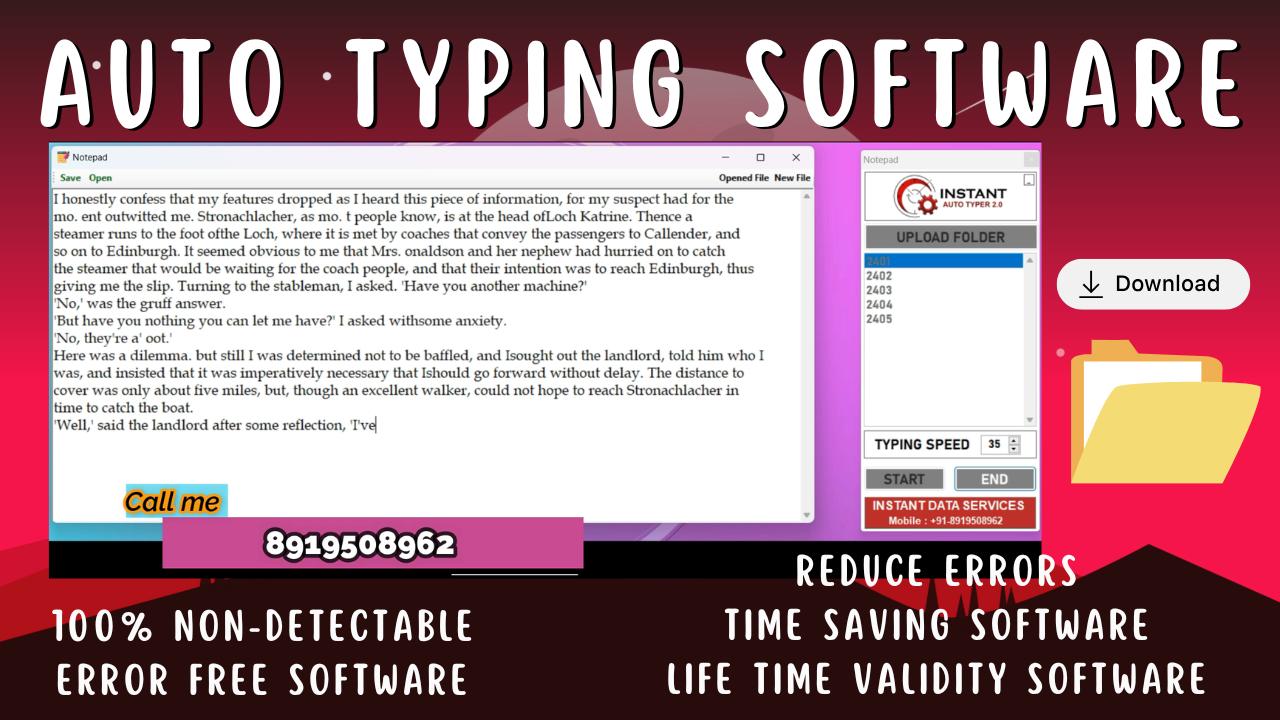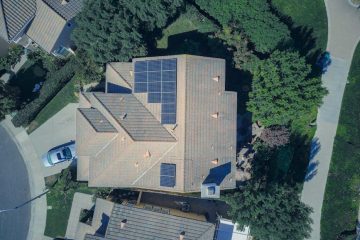Table of Contents
- Understanding the Benefits of Solar Panels for Your Home
- Key Considerations Before Installing Solar Panels
- Choosing the Right Solar Panel System for Your Needs
- Maximizing Efficiency with Smart Solar Panel Placement
- Navigating Incentives and Financing Options for Solar Energy
- Q&A
- Future Outlook


Understanding the Benefits of Solar Panels for Your Home
Investing in solar panels can transform your home into a hub of sustainability while providing tangible financial benefits. One of the most compelling advantages is the significant reduction in electricity bills. By harnessing solar energy, homeowners can generate their own electricity during sunny days, resulting in lower energy consumption from the grid. This not only saves money but can also lead to energy independence, reducing reliance on fluctuating energy prices.
In addition to cost savings, solar panels enhance the value of your home. Properties equipped with solar energy systems often sell at a premium compared to conventional homes. According to recent studies, homes with solar installations can see a return on investment through increased market value. Furthermore, many buyers are increasingly seeking energy-efficient features, making a solar-equipped home more attractive in a competitive real estate market.
Beyond financial rewards, adopting solar energy contributes to a greener planet. By choosing this renewable energy source, homeowners reduce their carbon footprint and help mitigate climate change. Here are some environmental benefits of solar panels:
- Decreased reliance on fossil fuels
- Reduction in air and water pollution
- Conservation of limited natural resources
By embracing solar technology, you’re not only making a smart investment for your family but also taking a meaningful step toward environmental preservation.
Key Considerations Before Installing Solar Panels
When considering the transition to solar energy, it’s essential to evaluate your home’s suitability for solar panel installation. Roof orientation plays a significant role; ideally, solar panels should face south to maximize sun exposure throughout the day. Additionally, assessing the slope of your roof can impact efficiency. A pitch between 15 to 40 degrees is generally preferred as it allows for optimal sun collection while preventing shadowing from nearby structures or trees.
Another crucial factor is the local climate. Regions with abundant sunshine, such as the Southwest, provide a strong case for solar investments, while areas with frequent cloudy days may result in reduced efficiency and longer payback periods. It’s also important to check local incentives and regulations. Different states offer varying tax credits, rebates, and grid access laws that can significantly influence your financial return when investing in solar. Researching these can make a substantial difference in your decision-making process.
| Consideration | Impact |
|---|---|
| Roof Orientation | Maximizes sunlight absorption |
| Roof Slope | Affects energy efficiency |
| Local Climate | Determines energy production potential |
| Incentives | Can lower installation costs significantly |


Choosing the Right Solar Panel System for Your Needs
When considering a solar panel system, it’s essential to evaluate your specific energy needs and usage patterns. Start by examining your monthly electricity bills to determine your average consumption. This will offer a baseline for how much energy your solar setup should generate. Factors such as the size of your home, the number of occupants, and your appliance usage can significantly influence your requirements. Remember to account for future energy needs, such as potential home expansions or the addition of electric vehicles, which may require additional power.
Next, explore the different types of solar panels available on the market. Each type has unique characteristics that make it suitable for various applications:
- Monocrystalline Panels: Known for their efficiency and space-saving design, these panels work well for homeowners with limited roof space.
- Polycrystalline Panels: Generally more affordable but slightly less efficient, they are a good choice for those with ample installation area.
- Thin-Film Panels: These flexible and lightweight options are ideal for unconventional surfaces but usually require more space for the same output.
budget considerations play a pivotal role in your decision-making process. Assess not only the initial installation costs but also the long-term savings on your energy bills. Additionally, keep in mind the availability of incentives and rebates that can significantly lower the upfront investment. Below is a simple blueprint of typical costs associated with different types of panels:
| Type of Solar Panel | Average Cost per Watt | Typical Efficiency |
|---|---|---|
| Monocrystalline | $0.90 – $1.20 | 15% – 22% |
| Polycrystalline | $0.70 – $1.00 | 13% – 17% |
| Thin-Film | $0.50 – $0.80 | 10% – 12% |
By carefully analyzing your electricity needs, exploring the types of available solar panels, and calculating your budget, you can confidently choose a solar panel system that aligns perfectly with your energy goals.


Maximizing Efficiency with Smart Solar Panel Placement
When considering the most effective ways to harness solar energy, the placement of solar panels is crucial. Orientation and angle significantly influence how much sunlight panels can capture throughout the day. Ideally, panels should face south in the Northern Hemisphere and north in the Southern Hemisphere to maximize exposure. Additionally, tilting the panels at an appropriate angle based on your latitude ensures that they receive optimal sunlight year-round.
Another key factor involves the shading of the panels. Even a small shadow can drastically reduce a solar panel’s energy output. Therefore, it’s important to assess potential obstructions such as trees, buildings, or other structures that could create shade. To mitigate this, you might consider:
- Regularly trimming trees to ensure they don’t overshadow the panels.
- Positioning panels on roofs that receive uninterrupted sunlight.
- Avoiding placement near tall buildings during peak sunlight hours.
Lastly, geographic location plays an essential role in determining the efficiency of solar panel placement. Regions with fewer cloudy days can see better performance from their solar setups, while those in areas with frequent inclement weather might need to adjust their systems accordingly. Understanding the solar potential of your specific location can be streamlined using a solar map, which indicates:
| Location | Annual Sunshine Hours | Recommended Panel Orientation |
|---|---|---|
| California | 3000+ | South |
| New York | 2500 | South-Southeast |
| Oregon | 2200 | South |
By carefully considering these factors—angle, shading, and geographic location—you can ensure that your solar panel installation achieves its maximum potential, making it a sustainable and efficient energy solution for your home.


Navigating Incentives and Financing Options for Solar Energy
Investing in solar energy has never been more accessible, thanks to a variety of incentives and financing options available to homeowners. The federal government offers significant tax credits that can offset installation costs. Homeowners can benefit from the Investment Tax Credit (ITC), which allows you to deduct a substantial percentage of your solar energy system costs from your federal taxes. Additionally, many states offer their own rebates and tax incentives designed to further encourage the adoption of renewable energy.
Financing solutions tailored to solar energy are also plentiful. Many homeowners opt for solar loans, which allow for manageable monthly payments without the burden of a large upfront cost. These loans can come from a variety of sources, including banks, credit unions, and solar installers. Furthermore, some residents may choose a power purchase agreement (PPA), which enables them to utilize solar energy without owning the system outright. In a PPA, the homeowner pays for the energy produced by the solar panels at a predetermined rate.
Understanding the various options can empower homeowners to make informed decisions about their solar investments. Consider researching local, state, and federal programs that provide financial assistance or incentives. Here are a few avenues to explore when it comes to financing your solar installation:
- State Incentives: Many states offer rebates and incentives that can reduce your overall costs.
- Leasing Options: If purchasing isn’t feasible, leasing can provide access to solar without a significant initial investment.
- Green Loans: Some financial institutions specialize in eco-friendly loans for renewable energy projects.




0 Comments